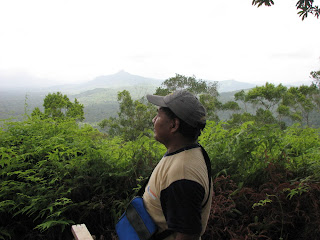






Last month we took a group of guests to Manatee Lodge, a remote lodge near Gales Point. On the way to the Lodge we stopped to look for Manatee's in the Gales Point Nature Sanctuary and got really lucky. A couple of Manatee's came very close to our boat, much to the delight of our guests.
Manatee Lagoons, also known as Northern and Southern Lagoons are located only 11 kilometers southwest of Belize City and 25 kilometers north of Dangriga. The entire protected area covers approximately 8250 acres. Average rainfall for the area is approximately 70 inches per year. The land surrounding the Manatee Lagoons averages about 10 feet above sea level.
The site consists of a variety of different habitats. Lying in the coastal plain, Manatee Lagoons are actually filling in from the erosion of the Maya Mountains. Within a couple of thousand years, it is possible that this area will be completely dry and covered with broadleaf tropical forests.
The Manatee Lagoons are known for the rich fauna found there. Jabiru Storks frequent the shallow shorelines to feed. The Central American River Otter frolicks up and down the rivers and through the entire lagoon complex. Very healthy populations of Morelet's and American Crocodile live throughout the area, from the highest reaches of the rivers to the coastline.
This area is an important breeding ground for waterfowl. Many of the surrounding shorelines are feeding grounds for ibis, egrets and herons. In Northern Lagoon lie two islands protected as crown reserves for nesting waterfowl. Ibis nest in large numbers here. Smaller numbers of egrets and herons also nest here.
The site consists of a variety of different habitats. Lying in the coastal plain, Manatee Lagoons are actually filling in from the erosion of the Maya Mountains. Within a couple of thousand years, it is possible that this area will be completely dry and covered with broadleaf tropical forests.
The Manatee Lagoons are known for the rich fauna found there. Jabiru Storks frequent the shallow shorelines to feed. The Central American River Otter frolicks up and down the rivers and through the entire lagoon complex. Very healthy populations of Morelet's and American Crocodile live throughout the area, from the highest reaches of the rivers to the coastline.
This area is an important breeding ground for waterfowl. Many of the surrounding shorelines are feeding grounds for ibis, egrets and herons. In Northern Lagoon lie two islands protected as crown reserves for nesting waterfowl. Ibis nest in large numbers here. Smaller numbers of egrets and herons also nest here.
One of the most noteable species in this area however is the manatee. Manatees are common all along the coast of Belize, but the highest concentration in the country outside of the mouth of the Belize River is in the Manatee Lagoon area. It is estimated that the Manatee Lagoon complex is the largest breeding ground for these docile creatures in the entire Caribbean Basin.












































